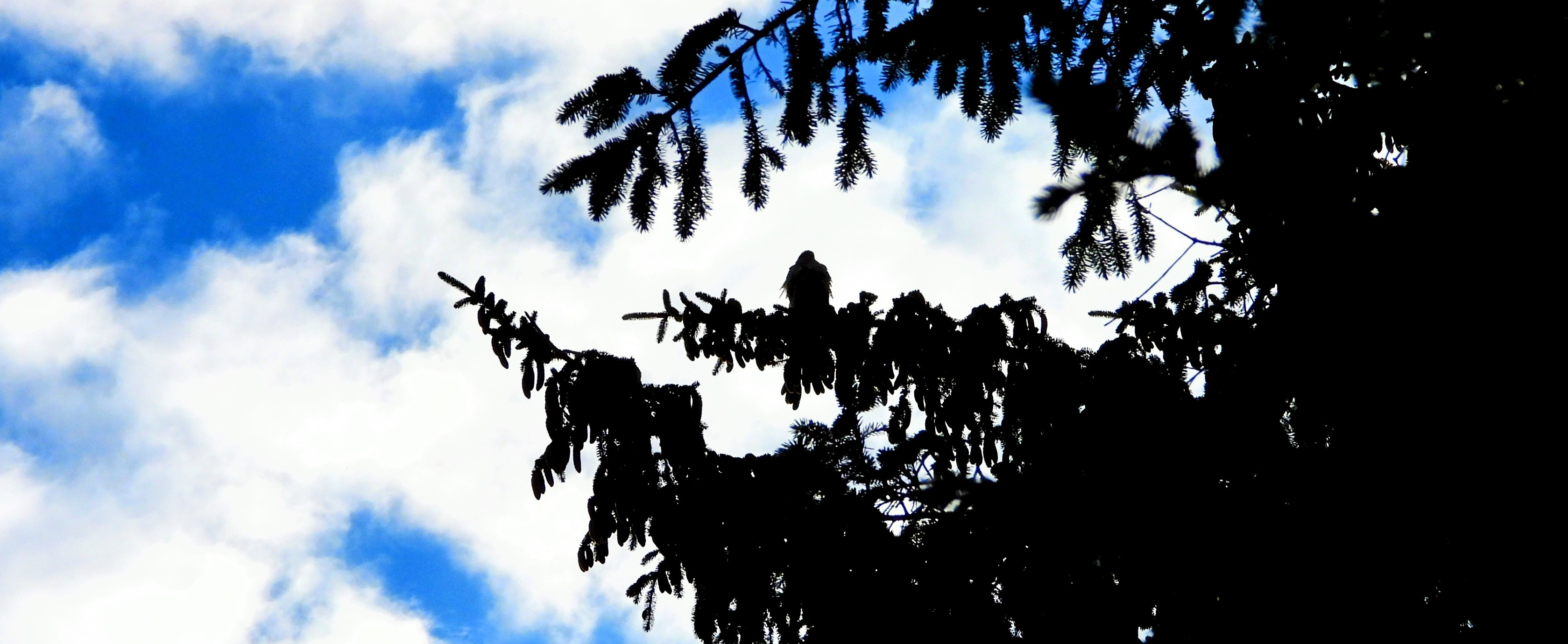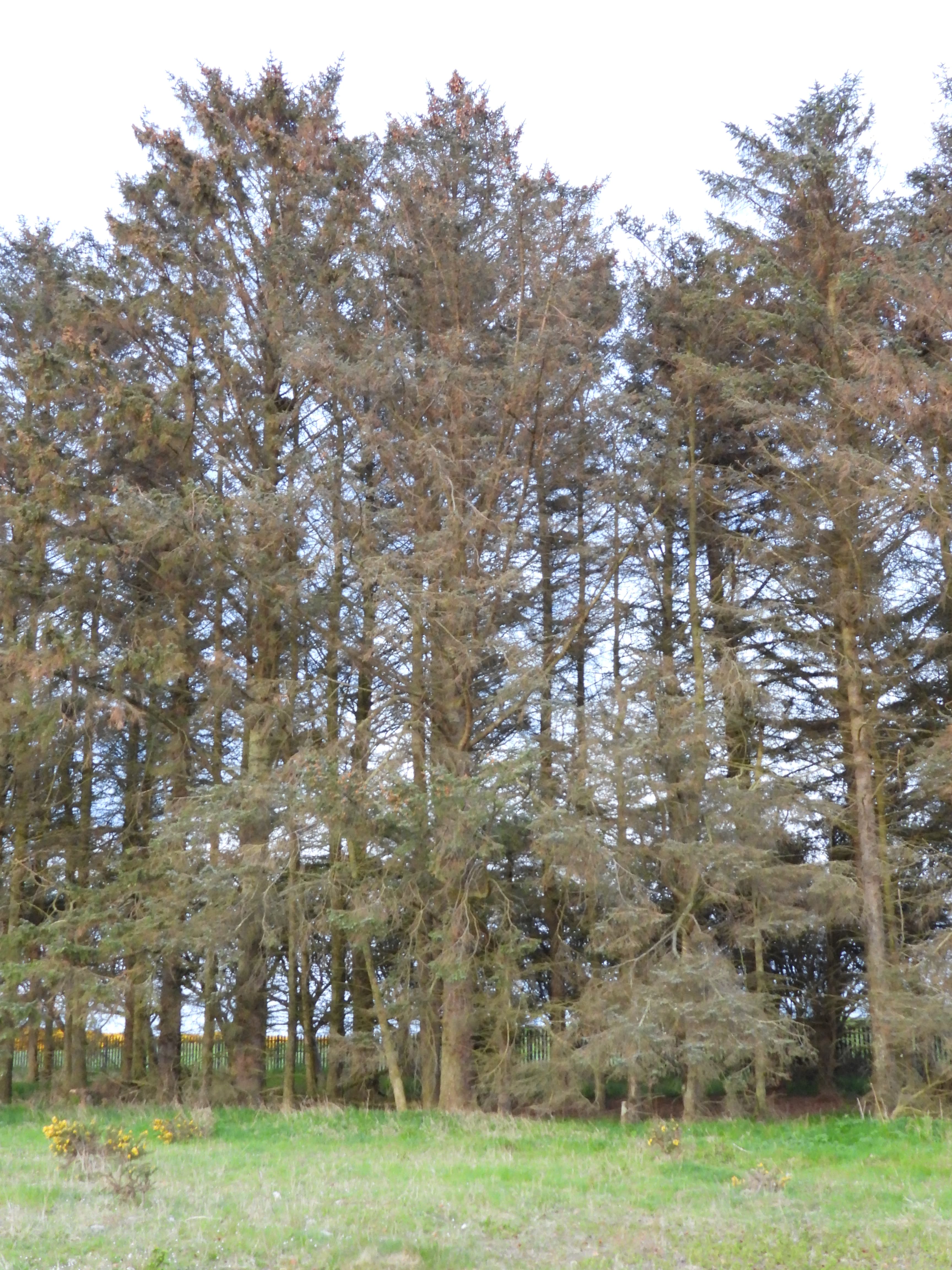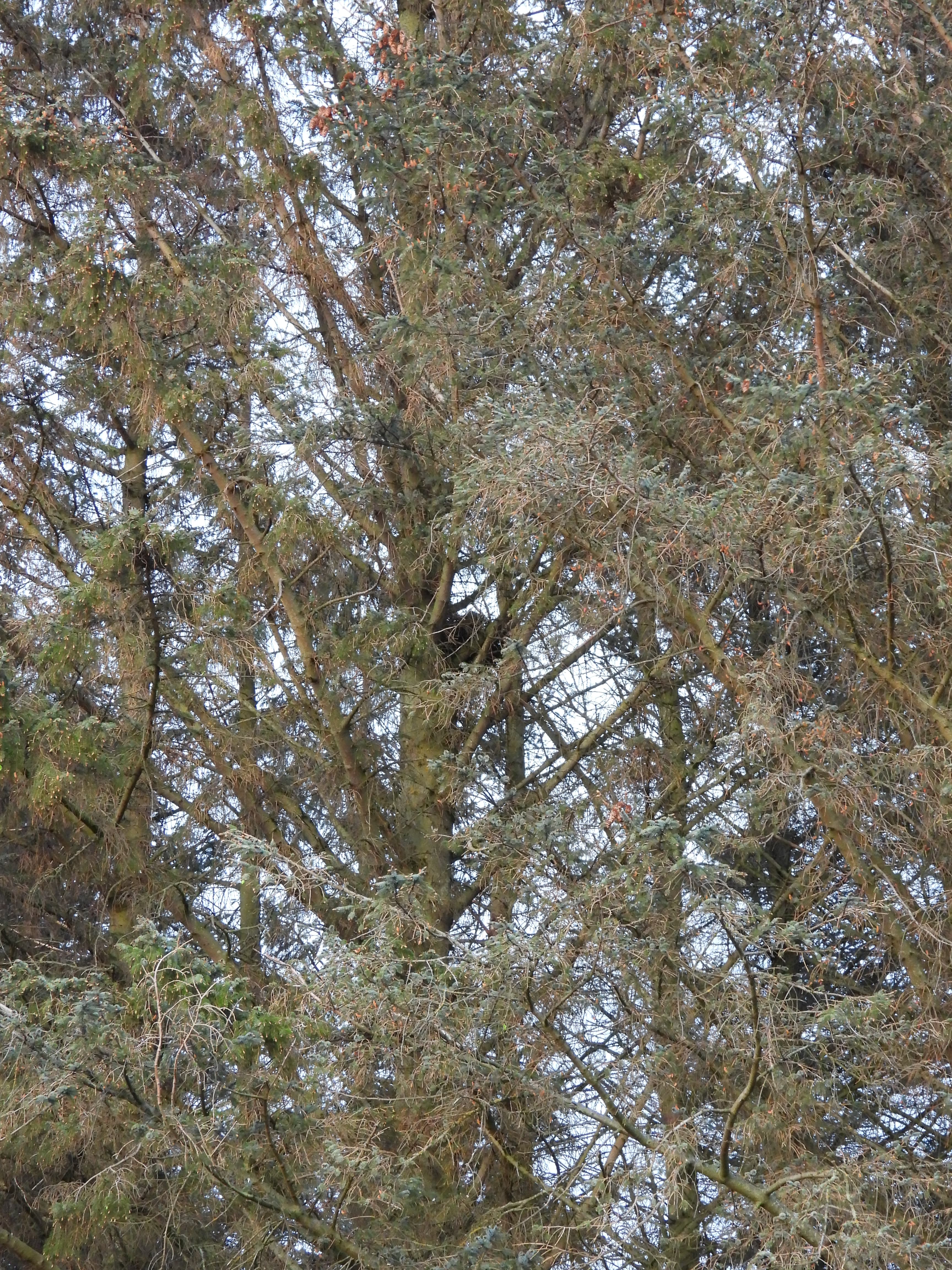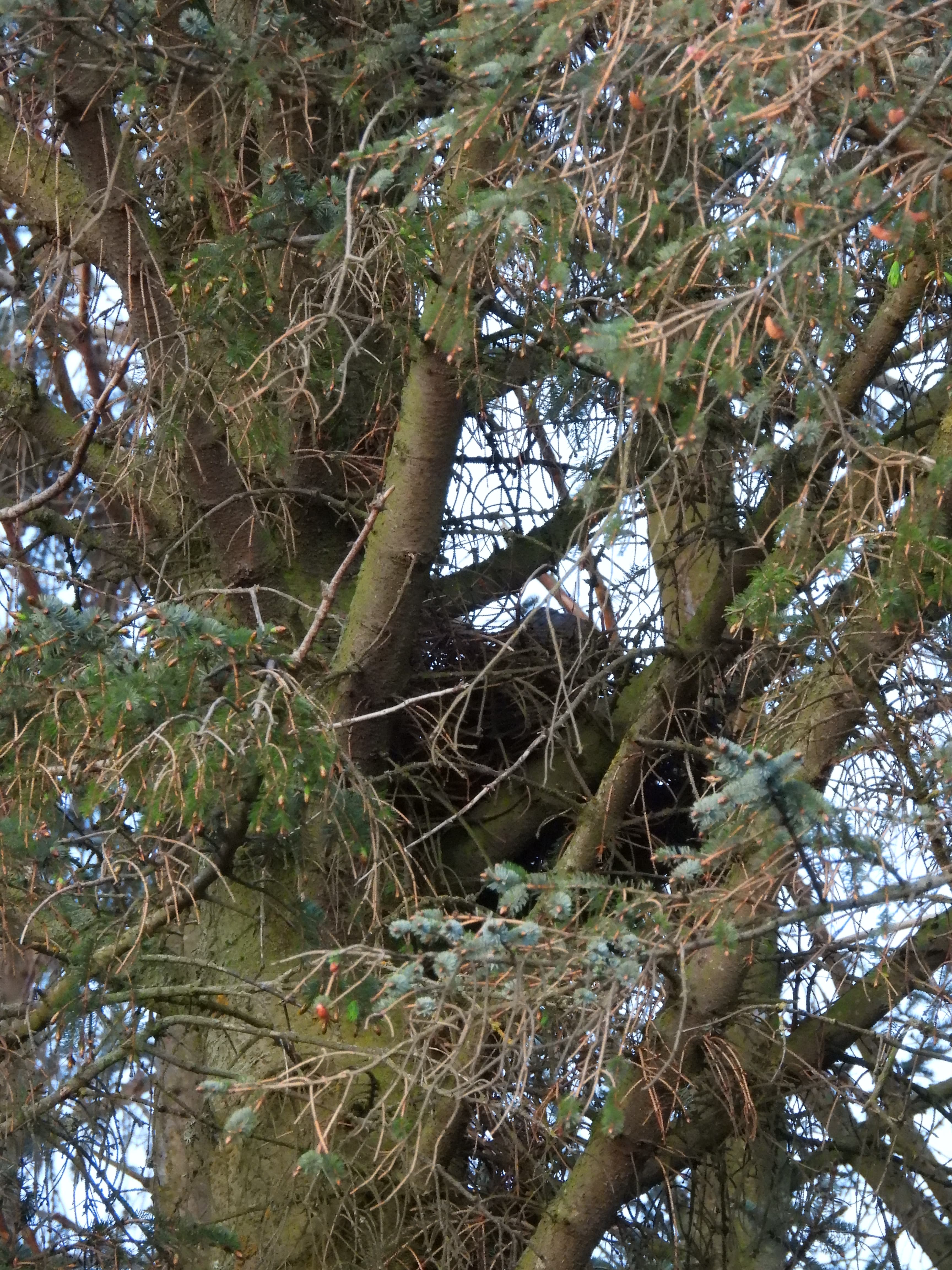

In the spring and summer of 2024, a pair of Eurasian Sparrowhawks nested and successfully raised two chicks in the woodland of the Corunna Moor. This is their story and a record of the observations I made during that period. Neither the pictures nor the clips are of professional quality. Some clips have been enhanced by Adrian Robbins.
Short description. An Eurasian Sparrowhawk (Accipiter Nissus) is a small bird of prey. A female has brown barred underparts and dark brown or grey-brown upperparts and is 35-40 cm tall with wingspan 67-80 cm. A male, much smaller than a female, is 30-34 cm tall with wingspan 60-64 cm. It has slate-grey upperparts and finely red-barred underparts. A male sparrowhawk hunts mostly small birds while a female can hunt a bird as large as a wood pigeon. More details can be found on this wikipedia page; see also a stunning short movie by the BBC.
The Corunna sparrowhawks. I would occasionally see both a female and a male on the moor and in the nearby trees. The next two pictures are from the fall and winter of 2023. On the first one the female is resting after chasing a flock of waxwings. She often stands on one leg.
The male is much more elusive and I managed to take only a few pictures of him. On this photo he landed on a tree after flying just above my head. Both hawks have a few white feathers on their upperparts.
March, 2024. I notice the pair making a regular noise in the woodland between the moor and the golf course. On March 16, I take the picture of the female carrying a twig for building the nest.
May 10, 2024. After weeks of searching I finally locate the nest. It is in 2/3 of the height of the highest spruce adjacent to the trunk. Such location is very common for sparrowhawks.



The first picture of the incubating female. A sparrowhawk lays 4-5 eggs and it is the female that exclusively takes care of the incubation which takes about 32 days.
May 14, 2024. Another glimpse of the male. On this photo he is sleeping next to the nest (on the other side of the trunk). He would sometimes visit the nest in a short absence of the female.
May 27, 2024. After a successful hunt, the male arrives with a prey, gives a brief call after which the female leaves the nest, picks up the food from the male and eats. The pick up is often a mid-air claw-to-claw. This footage shows the female eating a bird she just got from the male. The fact that she is eating outside the nest suggests that the chicks haven't hatched yet.
June 15, 2024. The first glimpse of the female feeding the nestlings which are yet to be seen. At this point I still don't know how many hatched and how many survived.
June 26, 2024. This clip shows the female feeding the young which still can't be seen. She then takes the remains of the prey out of the nest.
July 06, 2024. The first pictures of the chicks. There are two of them. At that time I don't know whether they are male of female. It will turn out that they are both female. I will name them Alpha and Beta. Alpha will be brave and daring and Beta will be shy.
July 07, 2024. And the first clips. They have already started growing proper feathers.
July 08, 2024. The young are changing by the day. On the picture below the brownish barring is already visible.
July 9, 2024. The mother having a break from the nest. Standing on one leg with the other sticking out from under the coat.
I am away in July 9-23 missing a very interesting part of hawk's development when they are learning to fly.
July 18, 2024. The last picture in the nest (by Adrian Robbins). Most likely this is Beta with Alpha already out of the nest.
July 24, 2024. After I return, I am anxious to know whether the young birds survived. On the first day I can see just one at a time. Young sparrowhawks make a lot of noise and it is very quickly clear to me that both of them have survived. This is in fact the easiest way to see a sparrowhawk: to follow the calls of the young ones.
July 25, 2025. The young are still being fed by the parents. Both parents constantly hunt to feed the young and themselves. Their main hunting area is somewhere out of the moor. After killing a bird they bring it and pass it to a young. First come, first served. The adult does not even need to call, the young immediately know a parent is coming and they quickly approach them to snatch the food. This happens so quickly that it is nearly impossible to photograph. On this clip one of the young is eating. Notice her long legs when she takes off after dinner.
July 28, 2024. A family of magpies and carrion crows live in the woodland. While the crows hardly bother the sparrowhawks, the magpies bully the young quite often (usually in the morning). A group of magpies surrounds a hawk and one of them attacks from behind. The hawk then picks one of the magpies and chases it sometimes nearly killing it. After several days of such brawls it is clear that the magpies stand no chance.
After a difficult morning with the magpies and a breakfast delivered by the mother, the young are ready for a nap.
July 30, 2024. The sisters spend most of the time together and very often they sit on a branch one next to the other.
A danger for young sparrowhawk is posed by larger birds of prey such as goshawk, owl or eagle as well as a pine marten. In the afternoon, a common buzzard visits the woodland. The mother hawk appears out of nowhere and starts harassing the buzzard. The crows and magpies see it and join in and the buzzard flies away with no harm to the young sparrowhawks. I haven't managed to take a reasonable picture.
July 31, 2024. In the evening, the mother arrives with a fresh kill and is not noticed by the young. Stops for a while and let me take a picture.
August 1, 2024. Alpha is exploring bigger and bigger area surrounding the Corunna Moor. In this clips she is on the grass of the golf course. The first footage shows her being harassed by a barn swallow (a family of them lives in the club building). In the second one she seems to clean her bottom. In the background, Beta's calls could be heard.
August 3, 2024. Beta and magpies.
August 4, 2024. I see Alpha's first successful kill. She sits on a spruce on the border with whitebeams at the height slightly above the whitebeams. Beta makes noise and flies away and sit higher on a spruce. Alpha remains at her place and after a minute later jumps down into the whitebeam and reappears a fraction of a second later with a bird in her claws. Quickly flies away north along the line of whitebeams making an adult call. This willow warbler could be a victim.
August 6, 2024. While Alpha is exploring more and flying further away, Beta stays very close to the nest and calls most of the time. Her right leg seems very independent.
August 9, 2024. Alpha is most of the time away. Sometimes the mother comes without prey, flies close to Beta and then to the other end of the woodland. As if she encouraged Beta to fly a bit further. Beta stops half way and returns to her safety and keeps calling. She keeps waiting for Alpha in the evening.
August 10, 2024. In the morning, a call from Alpha can be heard from the other woodland. After several rounds of call and response between Alpha and Beta, Alpha comes and is greeted joyfully by her sister. Then the mother comes and they fly together over the moor.
Then the sisters sit together. Notice their distinct calls: first Beta (a longer, higher and clean note), then Alpha when she flies away (short, rough and screechy).
During the day Beta flies to the nearby gardens and stay there for 20-30 minutes. Alpha is away most of the day.
August 11, 2024. Beta still alone in the woodland, calling.
At one point Alpha calls from a distance before approaching the woodland. She is greeted by her sister but did not stop. She continues flying and is joined by Beta. Flies to the other end of the woodland, stops briefly and continues towards the gardens. Beta stops and does not follow. After a few minutes returns to her usual small area around the nest.
In the afternoon, Beta flies to the trees behind gardens on Donmouth Crescent, then somewhere further, returns to the other end of the woodland, where she is mobbed by the crows and magpies, escapes to the bushes on the golfcourse, then back to the woodland.
In the late afternoon Alpha comes and they fly together in the direction of the woodland between the Gordon Barracks and the golf course.
I go to the woodland in the evening. There is the male there. When he spots me he jumps and glides and goes towards the other woodland. As if he just waited for me to say goodbye.
The chance of surviving the first year of a sparrowhawk are 30%. They have made the first step.
Created out of curiosity and for fun within the Small Happiness Project by Jarek Kędra. Comments and corrections welcome: kedra☠abdn.ac.uk